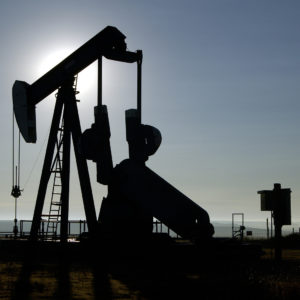“COVID-19 just threw a grenade in the middle of everything.”
That’s how Pennsylvania’s Secretary of Community and Economic Development Dennis M. Davin described the impact of the coronavirus on the state’s energy sector.
The fracking boom took northern and southwestern Pennsylvania by storm with more than 10,000 wells drilled since 2007, making the state the nation’s number two natural gas producer behind Texas.
In 2015, the oil and natural gas industry supported 322,600 jobs and contributed $44.4 billion to Pennsylvania’s economy, according to a study from the American Petroleum Institute. Nationwide, the industry represents 5.6 percent of the U.S. workforce — that’s about 9.8 million jobs.
But the one-two punch of oversupply and falling demand have dealt a body blow to the energy sector. Recent analysis from IHS Markit noted that the shale “revolution” — as industry insiders have called it — is “screeching to a halt.” Shale companies have not realized the hoped for return on investments, and drilling was already on the decline.
In February, the U.S. produced about 13 million barrels per day; that dropped by about 900,000 barrels per day last week. Although President Trump struck a deal with OPEC and Russia to reduce production by 10 million barrels per day, Weinstein said that’s not nearly enough to offset the glut.
And that was before coronavirus reared its ugly head.
For the first time, U.S. crude oil prices fell into negative territory and sellers were paying buyers to take excess supply off their hands. Some oil companies have rented tankers to store surpluses, and experts estimated that storage tanks would reach capacity in about three weeks.
“From the oil side, this is devastating,” said Dan Weaver, president and executive director of the Pennsylvania Independent Oil and Gas Association. “It’s a perfect storm. Thanks to COVID-19, we managed to change about 50 variables, probably lots more.”
Many of the association’s members are smaller, family-run oil producers. Weaver said he’s talked to members who have had to lay off family members.
That “perfect storm” is the never-before-seen global shutdown with more than 3.6 billion people around the world battling coronavirus by staying at home. Combined with technical aspects of the futures market, a price war between Saudi Arabia and Russia, and a sudden, sharp drop in demand — among other factors — the oil and gas market took a major hit.
“The world has been turned upside down,” said Bud Weinstein, an economist and associate director of Southern Methodist University’s Maguire Energy Institute. Although prices have stabilized from their disastrous lows, they still can’t sustain the industry or its jobs.
Trump tweeted that he would “never let the great U.S. Oil & Gas Industry down” and instructed Energy Secretary Dan Brouillette and Treasury Secretary Steven Mnuchin to provide financial assistance to the sector.
“This is so bad,” said Stephen Moore, co-founder of the Committee to Unleash Prosperity. “At this point, there’s only one thing that will actually get this industry up and running again and that’s to get the world’s economy up and running.”
Meanwhile, Pennsylvania’s gas producers will continue selling off acreage in the Marcellus Shale region due to low gas prices, Davin said.
At Shell Oil’s multi-billion-dollar ethane cracker plant under construction outside Pittsburgh, the company had about 8,500 workers onsite last month. Today, a small crew of 300 remains for maintenance purposes, and another 200 employees returned to work this week to begin critical repairs.
Meanwhile, Texas-based companies Baker Hughes and Halliburton have announced plans to cut about 6,400 jobs.
In Louisiana, where oil and gas comprise 2 percent of the state’s total workforce, producers and service companies are hemorrhaging jobs. If prices remain depressed for a significant time period, many independent operators could go under and there could widespread bankruptcies in the industry, Weinstein said.
“It’s real ugly in America’s oil patch.”

